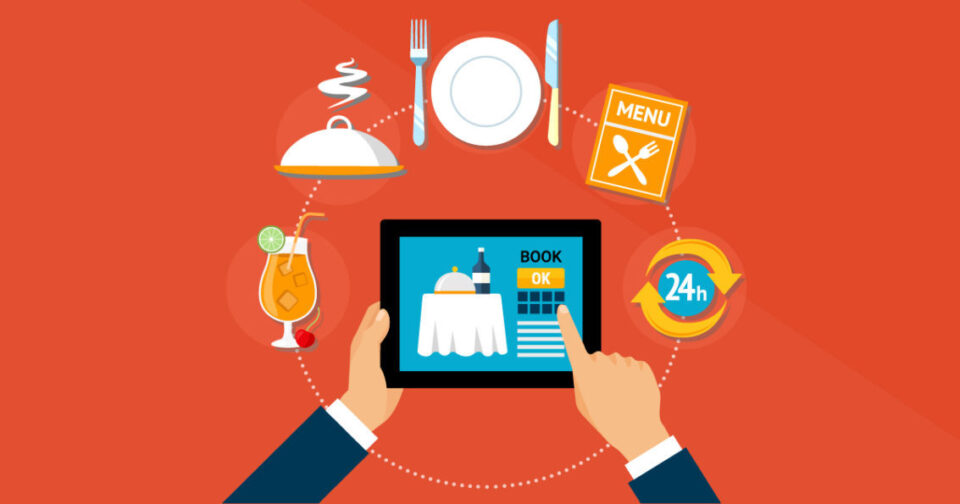Misunderstanding 1: Having a QR code means you have mobile payment for your business.
Many businesses are opting for online payment now, but most of them stay at the traditional level of making the payment code into a card and placing it at the cashier. They ignore the needs of customers to pay by credit card and debit card. Credit card and debit card payments are also part of mobile payments.Digital payment is now gradually dominating the payment market, replacing cash payment in many cases. Why should we use mobile payment in F&B business? This is because there is a difference between the customer’s concept of numbers and the concept of treating actual cash. For example, if we pay RM400 with a mobile phone, it may just be a number concept, but if we open our wallet and take out four pieces of RM100 in cash, we may feel that “it costs so much”. So digital payment is the future trend.
Misunderstanding 2: If the Per Customer Transaction is higher, the turnover will be higher.
The per-customer transaction is an important indicator in business data, which often has an important role in turnover. The degree of standardization of the product is an important factor that determines whether increasing the per-customer transaction can increase the turnover. If product standardization is done well, and the per-customer transaction and the average table price are lower, there will be room for profit. On the contrary, no matter how high the per-customer transaction and the average table price are, there will be no profit.
Misunderstanding 3: Popular dine-in dishes can help you make profits if you turn it into a takeaway dishes.
Some traditional dining restaurants are doing well in dine-in service but are poor in takeaway service. It is because they just view the takeaway service as something like only preparing the food and packing it for delivery. On the contrary, many dine-in products are not suitable for take-out because there are many aspects such as product design that need to be readjusted. Therefore, the packaging for take-out and the marketing skills for takeaway service must be carefully considered.
Misunderstanding 4: Takeaway and dine-in are completely separated.
The separation that we are talking about here does not refer to the differentiation of products, but to the differentiation of operational strategies.The takeaway service has now become a part of traditional F&B operations and brand promotions. A large part of the consumer group is active on delivery platforms. They may order lunch and dinner through them, but at the same time, you must also consider that there will be times when they would want to dine in together. Therefore, the online display of your store on different platforms is equivalent to an external publicity window. Through this publicity and display of takeaway products, consumers will form a deeper understanding of your restaurant and they will take your restaurant into consideration for their next dining needs.
Misunderstanding 5: Designing employee commissions based on their performance.
The drawback of the purely performance-oriented commission design is that, when customers come to your restaurant, the waiter will recommend a large number of products to them in order to obtain a high commission. But your customers may not like such products, nor the waiter‘s recommendations.
Therefore, the design of the commission should not be guided by performance alone. It is necessary to add performance, passenger flow, and customer satisfaction all together to make a fair commission.However, passenger flow may be difficult to assess, so you can consider looking at the number of customers added to the employee’s social account as a base for evaluation. For example. the number of customers that have been added to their Whatsapp.
Misunderstanding 6: To motivate employees is to allocate shares.
If you just started a business and need capital or customers, you can use shares to cooperate with others. If your business develops to a certain scale and needs to make structural adjustments, it can be done through share distribution. However, day-to-day operations do not have to use the method of allocating shares.In daily operations, employees can be rewarded by distributing profits which refers to future profits (the next day’s or next month’s profits). At the same time, it is necessary to avoid the “all-staff distribution system”, which will allow many lazy employees to wait for capable colleagues to help them make profits, because no matter if they do a lot of work or do a little work, they will gain the same profit anyway. Therefore, employees should be graded, and then profits should be distributed according to grades. For example, A-level and B-level employees can enjoy a certain percentage of the distribution in excess of the turnover, and C-level employees are not entitled to it.
Misunderstanding 7: One-time, mass-printing menus can save costs.
Many F&B businesses will print menus in large quantities, thinking that this can save some costs, but in fact, it will cause you to be unable to adjust the menu for a long time, which means the products on the menu cannot be adjusted and replaced, and you can’t put the dishes on the eyes-catching part of the menu in time.
Making a good menu requires an understanding of product data. For example, for dishes with high profits and high sales, you can further refine each production step to minimize the cost. For products with high profits and low sales, you can adjust the color of the products to make customers become more interested in choosing them. Meanwhile, for products with low profits and high sales, you can guide customers to ignore such products as much as possible through menu guidance. Therefore, the profit of each product needs to be carefully calculated and assessed, so that the menu can be adjusted accordingly to improve sales. From this, it is clear that reducing costs through a single mass-printed menu is obviously wrong.

